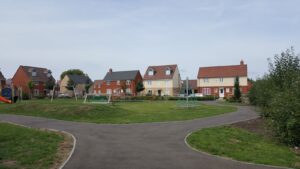Winning the argument for better streets in a time of austerity
Streets across the UK could be so much better. Yet campaigners promoting better streets face a critical challenge. At some point, everyone’s a pedestrian – and so people may not actively define themselves as one. Everyone uses the streets – and so people might take them for granted.
But when good schemes are implemented – from simply cutting the clutter, through slowing down the traffic, to a fully-fledged redesign – the improvements in safety, attractiveness and quality of life are immediately noticed by the people who use the streets: in other words, everyone.
Living Streets’ new report, Making the Case for Investment in the Walking Environment, aims to make those benefits far more obvious to decision-makers, nationally and locally. Developed by the University of the West of England in collaboration with Living Streets, the report will be launched today at a conference hosted by Living Streets in partnership with CLES and should provide a helping hand to local and national campaigners, professionals and politicians seeking to improve streets.
The health benefits of walking are well-known – though not so much so that the statistics aren’t still staggering: a 20% reduction in all-cause mortality just from regular walking is nothing to be sniffed at. Where the report adds most to the debate is in drawing the health and environmental aspects together with the economic and social benefits, illustrating them through hard-hitting case studies and making the case that investment in the public realm provides good value for money.
Rates of financial return from one Department for Transport programme – Mixed Priority Routes – varied from 24% to 70%, based on road collision reductions alone. Meanwhile, as well as the recognition of good public realm by the market through the prices of homes and commercial premises, the cost-effectiveness of public realm investment compared to spending on other, more expensive transport infrastructure and the extent to which local business is patronised by people on foot, evidence on the economic value of good public realm was refreshingly direct.
In one survey conducted in New Road, Brighton, people were willing to pay an average of £35 each in hard cash for more schemes like it. Extrapolating the results to the whole city would see over £17m raised for better streets.
Making the case for investment in the public realm need not be an adversarial process. Often councillors, local authority officers, civil servants and ministers have great sympathy for the need for good public realm – apart from anything else, there’s little better to point to when leaving office or retiring than a physical legacy – but need support in making the rigorous arguments to win the necessary funds.
As Daniel Moylan – the Kensington and Chelsea councillor and Transport for London deputy chair who has some of the most ambitious street schemes in London – says in the report’s foreword: ‘Those of us who have championed better streets for many years fully understand the benefits of such attention and investment, but unfortunately we have not yet reached the position where this is second nature to all of those with responsibility and influence over our public spaces.’
Making the Case for Investment in the Walking Environment will help bridge the gap between the plain common sense of investing in our streets and the means to make it happen.
















I think you are spot on in terms of understanding the wider impact (and cost savings) of investing in the walking environment and makingthe acse for better streets. but even with the investment there is still a job to be done in terms of convincing people that the urban or street environment is a safe and enjoyable place to walk though!